
Why Hokkaido’s Hairy Crabs Are So Popular: Firm Meat Most Delicious in Spring!
- Written by: Minna no Kotoba Sha
Hokkaido is a treasure trove of delicious seafood. Crabs are especially popular, with four main varieties, the large red king crab and snow crab, the medium-sized blue king crab, and the smaller hairy crab, which you can enjoy at restaurants or bring home as souvenirs.
Of these four types of crab, the hairy crab is the most familiar to the locals of Hokkaido. But why is that so? And what is the most delicious way to eat hairy crab?
Spring is the time when delicious crabs from Okhotsk come in season. We head down to Marumi Osanai Shōten in Nijō Market, Sapporo, to find out more about hairy crabs' popularity.
What is hairy crab? When is it in season?
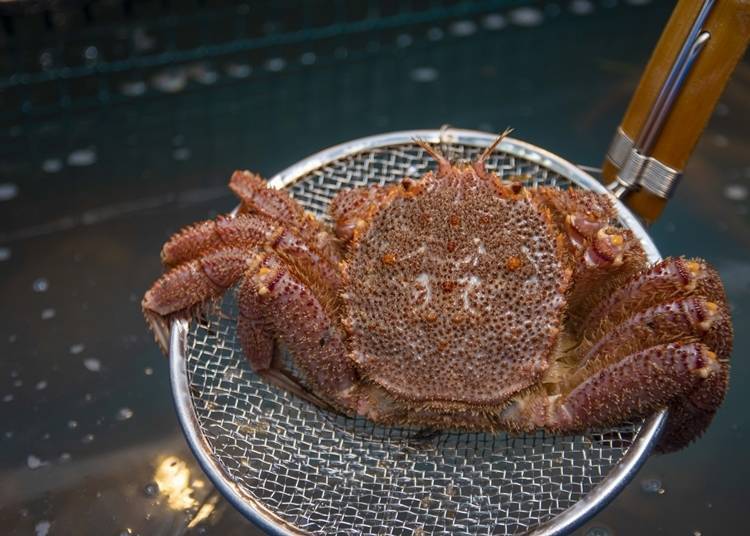
As its name implies, hairy crabs are known for the tiny hairs on their carapace. Found in the waters off Okhotsk all the way to the Pacific Ocean, hairy crabs have a wide distribution and they live on shallow sea beds 150 meters below sea level.
In Hokkaido, freshly caught hairy crab is available throughout the year. However, depending on the water temperature and weather conditions, their molting and spawning seasons may change, resulting in changes to fishing seasons.
During the fishing season at places that produce hairy crab, you can enjoy freshly caught hairy crab from the ports, or try it boiled Hamayude-style at the nearby processing facilities, so do take the chance to enjoy these crabs during peak season.
・Okhotsk Coast (Omu, Monbetsu, Abashiri, Shari), Sōya (Wakkanai, Esashi): Spring (when the drift ice melts, from March to June)
Though the ice typically starts to melt from February off the Okhotsk coast, there will be a plankton bloom under the ice. As the hairy crabs consume the plankton for nutrients, plump and sweet hairy crabs can be caught in March after the ice melts away at the beginning of spring.
・Around the Ring of Fire (Shiraoi, Kojōhama, Oshamambe): Summer (July to August)
As there are many hydrothermal vents in the area which are rich in minerals, the ring of fire is a hatchery with high-quality crabs. The hairy crabs which have absorbed the minerals from the ring of fire have soft and delicate bodies, with their kani miso, a paste made from their internal organs, having a unique and prized flavor.
・Shiranuka, Kushiro, Nemuro Coast: Autumn (September to December)
The waters here are rich in nutrients from various types of fish feed, and because of the large temperature difference of the waters, the crabs caught from here have firm meat.
・Hidaka, Tokachi Coast: Winter (December to February)
The seas off the coast are where the Kuroshio and Oyashio currents meet, resulting in a large and nutritious plankton bloom. Besides this, this is where high-quality Hidaka konbu seaweed is produced, and the crabs are like those that have been fed fish feed, with a strong rocky flavor, and it is well-renowned for its large amounts of creamy kani miso.
Why do the people of Hokkaido eat hairy crabs?
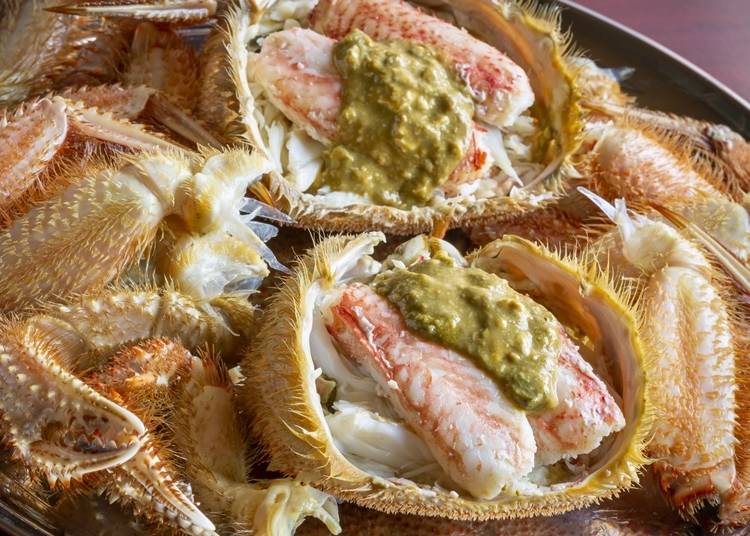
Hairy crabs are well-known and loved in Hokkaido, and compared to red king crabs and snow crabs, can be caught from shallower waters. As it’s available all year round, one of its unique aspects is that its price remains relatively stable all year round.
It is only recently that hairy crabs have become commonly eaten, starting from 1920, when they were first sold in cans. The way that hairy crabs are eaten now, as boiled or live crabs, started from around 1965.
With fine meat that has a delicate sweetness, and from the tastiness of the thick and soft kani miso, it is a dish that can be found on any table in Hokkaido during New Year celebrations.
How is hairy crab different from red king crab?
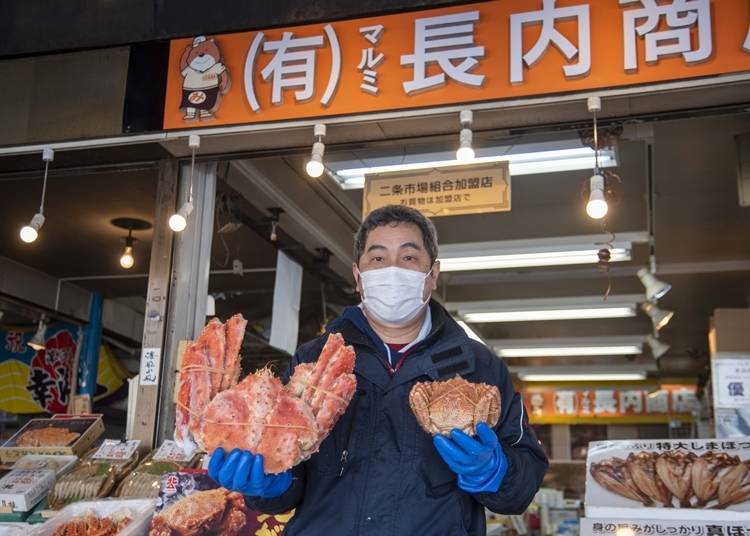
The most striking difference between hairy crab and red king crab is the large size difference. In order to maintain the sustainability of the hairy crab population, only male crabs larger than 8 cm are fished, though they are still small enough to be held with one hand.
They typically weigh around 400 grams each, and the average price is about 10,000 yen for a kilogram. Crabs larger than 500 grams are considered large-sized, and crabs exceeding one kilogram are an exceptionally rare find.
On the other hand, popular amongst foreign visitors is the red kind crab, with a size of around 25 centimeters, and they can reach over a meter in length with its legs extended, and compared to hairy crabs, they are quite large.
They usually weigh around two kilograms, and crabs larger than three kilograms are typically served leg by leg. The typical price is between 10,000 yen to 13,000 yen for a kilogram. The ones typically on sale are typically produced from Russia, though Alaskan red king crabs are also readily available, with only a small fraction being produced from Hokkaido.
Despite being called a red king crab, it is really a close relative of the hermit crab. Because of this, while hairy crabs have one pair of claws and eight legs, red king crabs have one pair of claws and six legs.
Besides this, while the kani miso of hairy crabs can be sold whole together with the crab, that from red king crabs dissolves and melts once boiled, so another difference is that red king crabs are typically sold without kani miso.
How do you eat hairy crabs?
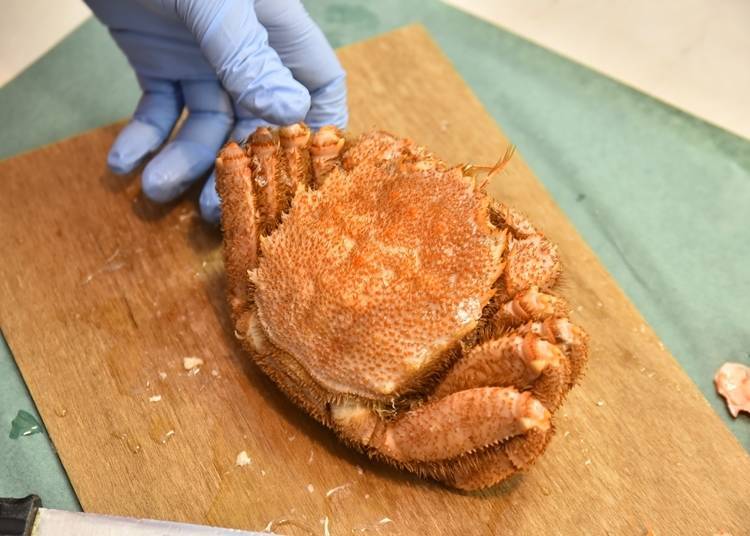
Compared to red king crabs, hairy crabs have soft shells, with relatively few spikes. If you know the trick, eating it is simple. The tool you will need is a pair of kitchen scissors.
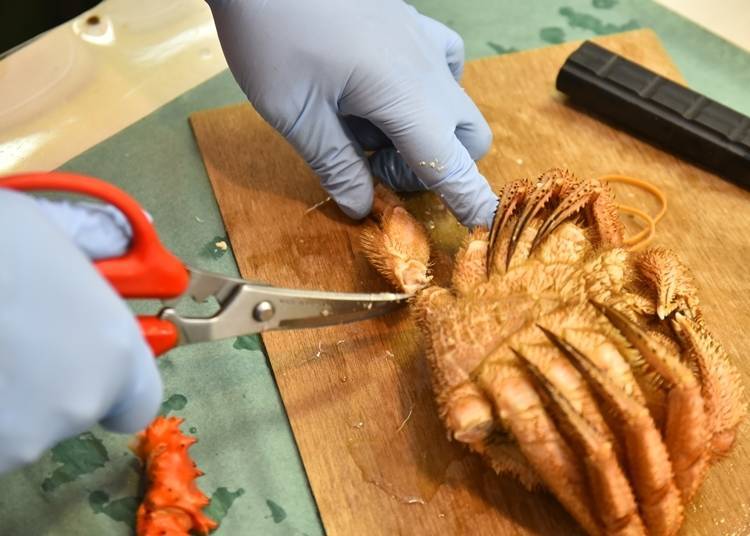
(1) With the crab facing upside down, cut off the legs at where it joins to the body, and cut the legs in half at the joints.
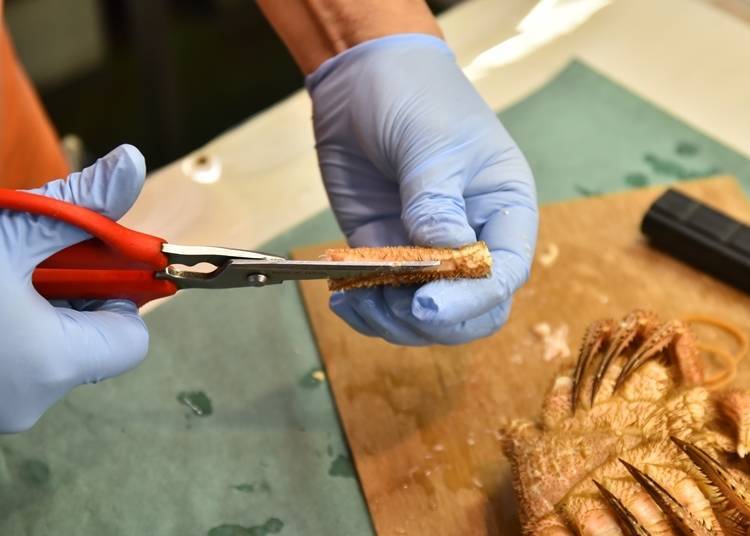
(2) Insert the scissors through the cut, and cut along the hairy shell.

(3) Open the cut shell with your fingers, and the meat will be easy to pull out. For the thinner legs with claws, cut them open in a similar way, then remove the claws to pick out the meat to eat it more easily.


(4) If you have a seafood pick for crabs, it’ll be a lot easier. You can use it to remove meat from the shell, and has two different tools, a thicker end with a spoon for scooping the kani miso out, and a thinner end used to pick out meat at the ends of the legs.
What dishes are hairy crabs used in?
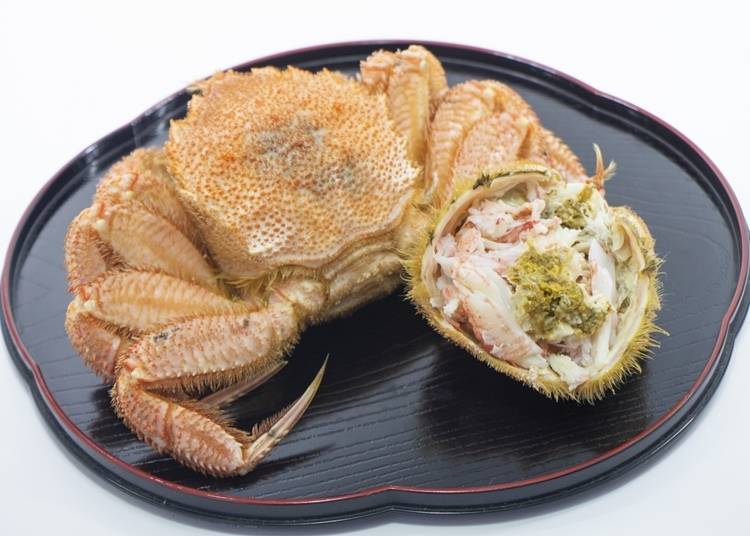
When having boiled hairy crab on its own, you can savor the umami and exquisite sweetness, and seasoned with just the right amount of salt it can be enjoyed as is, but hairy crab can be used to make many delicious dishes too.
One dish that you absolutely have to try is kani miso served in the shell. You can taste the boiled kani miso on its own, and when mixed with the crab meat, results in a thick and enjoyable flavor.
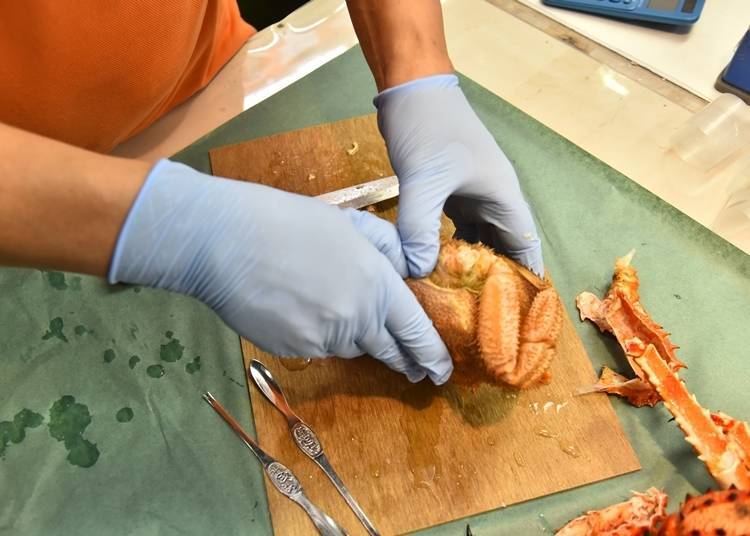
First, turn the crab over, and you’ll find the triangular portion, called the apron. There is a hole where you can slip your finger inside to pry it off, and you can open in to find it brimming with orange kani miso.

It’s also highly recommended to try a dish called “kōra sake” after you’ve eaten the crab. Wrap the outside of the shell in aluminum foil, and pour a suitable warm sake, such as sake, into the shell and warm it over a fire.
When you drink it just as it starts to bubble, you can taste the perfect complement of the umami of the sake with the fragrance of the kani miso, and it warms your body up comfortably too.

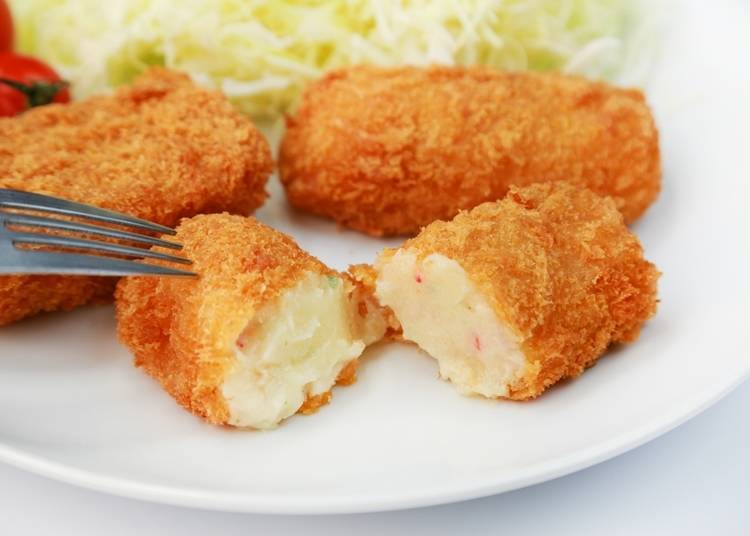

You can also try out various dishes made of hairy crab in Hokkaido. In seafood izakaya restaurants, Japanese washoku restaurants, and sushi joints, you can enjoy teppō-jiru soup made from soup stock derived from hairy crab legs and miso, or crab chawanmushi which uses crab meat, pickled crab, kani miso, and other gourmet foods on the menu.
In western-style restaurants, crab cream croquette is the standard go-to. In Chinese restaurants, crab fried rice made with crab meat is available too.
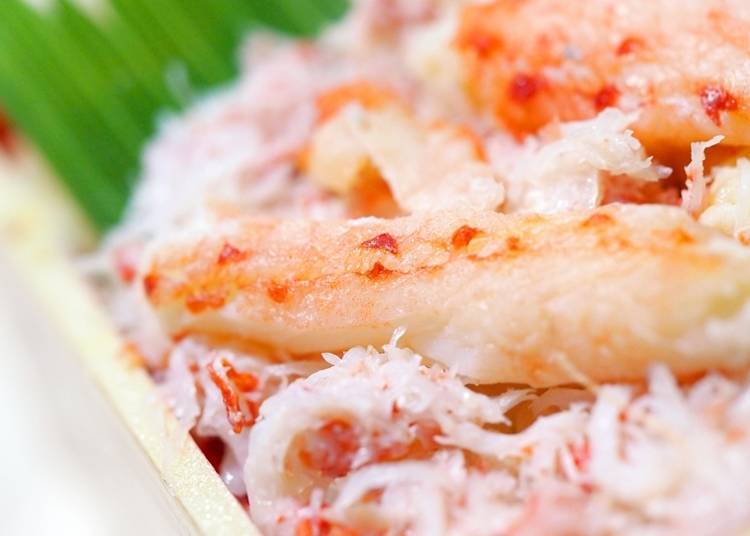
The “Kanimeshi”, a dish of crab meat on rice, is a specialty of the Oshamambe region in the south of Hokkaido, and as one of the producers of crab in the region, it’s one of the gourmet foods you have to try while holidaying in Hokkaido.
Kanimeshi is on sale on JR special express trains from Sapporo to Hakodate.
Special thanks to Marumi Osanai Shoten.
-
Marumi Osanai Shoten有限会社 マルミ長内商店
- Address 1-chome, Minami-3-jo-higashi, Sapporo-shi, Chuo-ku, Hokkaido, 060-0053
- Phone Number 011-221-2278
Business hours: 8:00 a.m. to 5:00 p.m
Open year round (may close due to the Covid-19 situation)
Text by Minna no Kotobasha
Information accurate as of March 2021. Please check the official website for more details.
Enjoy Hokkaido seafood at these fine restaurants!
Minna no Kotoba Sha is a production company founded by an editor with extensive experience in editing local magazines in Sapporo. For over 20 years, our team has conducted research and written articles across Hokkaido, with Sapporo as our primary hub. Our diverse portfolio includes the production of various books such as travel guides, informational magazines, and collections showcasing the picturesque landscapes of Hokkaido. Comprised entirely of women, the team at Minna no Kotoba Sha boasts diverse interests, including a passion for travel, culinary delights, and alcoholic beverages. The scope of our communication efforts spans a wide range, covering everything from introducing notable restaurants to providing coverage of local events and sharing stories of leisure experiences.
- Area
- Category
*Prices and options mentioned are subject to change.
*Unless stated otherwise, all prices include tax.
Popular Tours & Activitiess
Recommended places for you
-
Appealing

Shiroi Koibito Park
Theme Parks
Sapporo / Chitose
-
Appealing

Sapporo Ramen Yokocho
Ramen
Sapporo / Chitose
-
Appealing

Kanemori Red Brick Warehouse
Shopping Malls
Hakodate
-
Appealing

Rukku and Uohei
Izakaya
Sapporo / Chitose
-
Appealing

Noboribetsu Onsen
Hot Springs (Onsen) & Bath Houses (Sento)
Noboribetsu / Lake Toya
-

SakaguraMinamiichijo
Japanese cuisine
Sapporo / Chitose
-
Ad

Cycling Through Hokkaido: Discover the Beauty of Memuro and the Tokachi Plains
-

BIGGEST SALE ALERT! SATUDORA Tax-Free Winter Sale: Stack Coupons for Massive Savings!
by: Guest Contributor
-
Ad

Smart Ways to Avoid Crowds and Enjoy a Safe, Comfortable Trip to Otaru.
-

Scenic Road Trip from Hakodate to Matsumae: Stunning Views, Traditions, and Tasty Delights
by: Nobuka Kawashima
-

7 Iconic Hokkaido locations that will make your Instagram shine
by: Himanshi Shah
-

Expert-Recommended: 9 Hakodate Hotels Serving Up the Best Breakfasts in Town
by: Nobuka Kawashima
-

Tokyo Train Map: Your Essential Guide to Subways and Railways
-

Secrets to Shopping in Japan: Guide to Annual Sales in Japan & Where to Shop
by: Miyu Shimada
-

Visiting Hokkaido Japan: 14 Things to Know Before Traveling to Japan's Wild North
-

Hokkaido Lavender Fields: 6 Best Places in Furano to See Japan's Dreamiest Purple Meadows
by: Nobuka Kawashima
-

Kichijoji – Explore Tokyo’s Top-Rated Stylish Suburb in Half a Day!
-

These 18 Things to Do in Hakodate Will Make You Fall in Love With the Northern Wonderland
by: Guest Contributor
- #best sushi hokkaido
- #things to do hokkaido
- #best ramen sapporo
- #what to bring to japan
- #new years in tokyo
- #what to buy in ameyoko
- #japanese nail trends
- #what to do in odaiba
- #onsen tattoo friendly tokyo
- #daiso
- #best sweets otaru
- #japanese fashion culture
- #best nature furano
- #japanese convenience store snacks
- #best japanese soft drinks
















